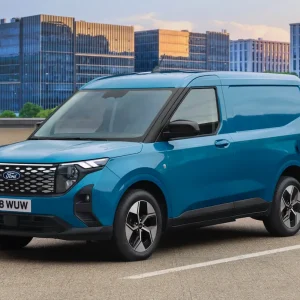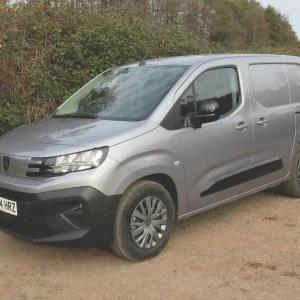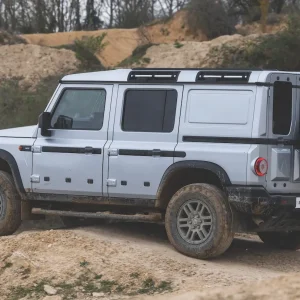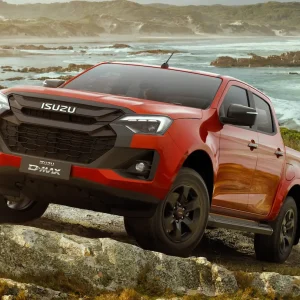It’s unlikely 2020 will be remembered for anything other than Covid-19, but that aside we should be remembering it as a special year for vans. Vans have unquestionably played a huge role in the pandemic, accelerating our reliance on online shopping and keeping many of us fed with home deliveries.
But 2020 has also been the silent year of the electric van. There’s been an unprecedented number of new electric models launched this year – almost too many to list – including long-awaited models like the Mercedes-Benz eVito and eSprinter, surprise arrivals like the Renault Zoe, joint-venture vans the Vauxhall Vivaro-e, Peugeot e-Expert and Citroen e-Dispatch, the third-party converted Volkswagen ABT eTransporter, and new names like the Maxus E-Deliver 3. New diesel vans have, however, been conspicuous in their absence. These are definitely unusual times.
You might also notice that the majority of them are mid-sized vans, which have, until now, been strangely lacking as electric vans. We’ve had small vans like the Renault Kangoo Z.E. and the Nissan NV200, and we’ve had large ones like the LDV eV80 and Renault Master Z.E., but none of them are really segment leaders, and while they may have defined their electric niches, they’re only fringe players in the diesel-dominated scene. What electric vans need is a true heavyweight, and the Mercedes eSprinter is that vehicle. It will still have its work cut out, though. Competition is scheduled to arrive thick and fast.
The Fiat eDucato is already in the final stages of production. Citroen e-Relay and Peugeot e-Boxer models have already been announced, and the Ford E-Transit has just broken cover. Trials of the Volkswagen e-Crafter continue (in limited numbers and left-hand drive) but it’s already looking like a crowded marketplace.
The eSprinter will have stiff competition then and arrives with just one body size: a medium-length, high-roof (L2 H2) model. Capable of transporting up to 1,045kg, and with a load volume of 11m3, it does on paper stack up to be a convincing commercial vehicle, but as with most electric vehicles, range will be the critical sticking point. There are two battery sizes available, which means you can either have a longer range or a larger payload. The small battery is 41kWh with a range of up to 70 miles and a payload of 1,045kg. A larger 55kWh battery increases range to 96 miles but hammers your payload to just 774kg.
Busy multi-drop workloads mean that quick charging times are going to be crucial if electric vans are to take off. The Mercedes eVito struggles on this front as it only supports 7kW charging, which means a full battery charge will take more than six hours. The eSprinter, thankfully, gets a 20kW charger as standard, which means an 80% charge can be added in less than two hours. It will take eight hours to charge the 55kWh battery and six hours for the smaller 41kWh battery on a domestic power supply, but Mercedes has also included the option of rapid charging with 80kW, allowing an 80% charge to be added in just 30 minutes.
The conventional Sprinter range is all about choice, with a wide variety of bodies, and engines, but the electric version has just one power option, an 85kW (114hp) motor producing 295Nm of torque. There’s also only one trim level, Progressive, which is the middle of the three options available on the normal van. Standard equipment includes a heated driver’s seat, air conditioning, DAB radio and Bluetooth connectivity, as well as a 7in touchscreen from the MBUX multimedia system – the smaller of the two screens available in the regular van. It also gets steering wheel-mounted controls, along with cruise control, and has a height and rake-adjustable steering wheel. On top of the standard Progressive trim, eSprinter vans also have remote vehicle pre-conditioning to enable you to heat or cool the cab prior to starting your journey when connected to a power source – saving valuable energy and increasing range. Mercedes is also giving buyers two years of Mercedes Pro connect to monitor battery charge levels and as well as remote routing software. It also gives you theft warning and geofencing alerts to increase safety and the security of the van’s load.

It’s no secret that electric vans are great to drive. The low centre of gravity thanks to the additional low-down weight of the batteries means that even the largest vans can corner far more smoothly. The Sprinter is already one of the top big vans to drive, with a comfortable ride and great handling. The eSprinter only improves upon that already excellent formula. The additional weight, situated between the chassis rails underneath the rear loadspace, means there is very little body roll and the van corners more like a hatchback than a 3.5-tonner. It’s also fast. Considering that the 85kW motor is only the equivalent of 114hp, the eSprinter doesn’t feel like a poor relation compared to the diesel range, which starts at 150hp. Instead, the single drive transmission and instantaneous torque means the eSprinter pulls hard and fast from low down.
Unlike many of its rivals, the eSprinter has several levels of regenerative braking. It’s the same system that is used in the eVito and it adds to the feeling that you are still driving a van with gears, despite there being none. Braking levels are controlled using paddles on the steering wheel, with a regular drive (D) mode that gives you a decent amount of regenerative braking, or a more severe mode (D-), which increases the regen. It’s exceptionally efficient – so much so that if you plan a short distance ahead you barely need to use the brake pedal. So far, so normal, as several vans have an increased level of regenerative braking, but the eSprinter’s party trick is its D+ and D++ modes, the latter of which allows you to completely freewheel and use the vehicle’s momentum. The D+ mode adds a small amount of braking, but allows you to coast while also regenerating a small amount of energy back into the battery.
As well as four levels of regenerative braking, there’s also three driving modes. These control the amount of power and torque released by the motor. Comfort (C) gives you 100% power and instant full torque. This has a negative effect on the van’s overall range but is the mode at which the claimed mileages are calculated. Economy (E) mode improves your overall range capability while still giving you full power and torque – the only difference is that the torque delivery is limited slightly. Economy+ (E+) cuts power to roughly 80% and drops the torque output by 10%. Heating and cooling controls are also reduced in order to maximise the range of the vehicle. It’s effective too, as we saw a significant improvement in the indicated range of our test vehicle.
As a whole, we would say that in the real world, while driving considerately, E+ added nearly 20 miles to our range – roughly 20%.
While it’s harder to determine how successful the limited power and torque would be on a full load – especially when you consider the van is already down on power compared to the entry-level diesel van – the eSprinter still has no problem reaching its 75mph top speed regardless of the mode you are in.
As the competition heats up in the electric van sector, features like the four levels of braking and the three driving modes help differentiate the eSprinter from rivals.
Its main problem is that range and payload are both compromised – an electric Renault Master can carry more, and the Volkswagen e-Crafter can go further.
For that reason, an all-rounder large electric van may yet be a way off, but the eSprinter is a fresh and interesting take and an encouraging sign for the future.
Mercedes-Benz eSprinter
Price (ex VAT) £51,950 (ex VAT, ex PiVG)
Load length 3,375mm
Load width 1,350/1,550mm
Load volume 11.0m3
Gross payload 1,045kg
Engine size/power 85kW/114hp
C02 0g/km
Diesel Delivery
It might be the year of the electric van, but there has been one notable new diesel van to be launched this year. The Maxus Deliver 9 is the successor to the LDV V80 and a total blank-sheet redesign of the large van from Chinese manufacturer SAIC Maxus.
To my eyes, it looks like a cross between the Transit and the Sprinter, which in many ways sets the tone for what Maxus is trying to achieve. It’s certainly trying to be smart on both the inside and the out, with a much greater air of quality than its predecessor. But there are some niggles.
Key touchpoints, like indicator stalks, have some cheap plastics, and while the sloped armrests look funky they’re not great for ergonomics. Bits that have been done right, though, are the all-round visibility, ample storage, and a wealth of technology and safety equipment, including lane departure warning and parking sensors. Maxus could easily have evolved the V80, made a few improvements and carried on (with or without the LDV name), but instead the Deliver 9 is ambitious in its scope, and Maxus should be commended for its efforts.
George Barrow is the UK judge for the International Van of the Year, the prestigious prize awarded by leading European LCV journalists.
Sponsored by:






